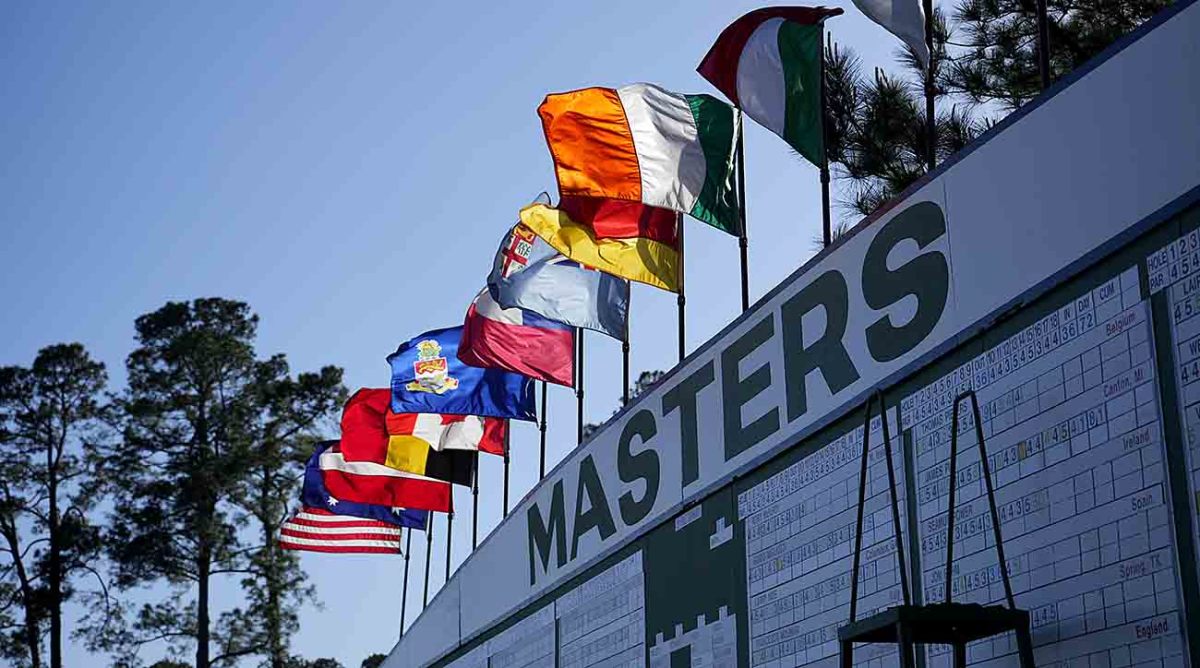The Masters Has Long Surpassed the U.S. Open As Golf's Favorite Major. Here's Five Reasons Why

Last year’s Masters yielded a final-round rating of 5.8—one of its smallest audiences ever but still double the number of those who watched a more riveting battle on Father’s Day at the U.S. Open. Two very different tournaments, each monumental in importance and distinct in flavor, although it has become increasingly obvious that golf’s viewing public would rather prune the bushes than tune in to America’s national championship.
It’s a party full of long faces gathered in stressful places. The Masters is a celebration of high drama held at an outdoor cathedral, the same exquisite location every spring, in which case familiarity breeds barely a crumb of contempt. Not every edition of either event plays hard and fast to the script, but if perception and reality are interchangeable, the U.S. Open has trudged into the 21st century looking like a casualty of its own image.

Back when you could smoke on airplanes and get somebody from customer service on the telephone, it wasn’t that way. The year’s then-second major was branded as an endearing exercise of grit over gruesome fortune. The toughest soldier was the last man standing, even if he favored repulsive bellbottoms over combat camouflage. Bogeys came in bunches, turning those 8-footers for par into must-make scenarios every few minutes, and golf fans everywhere just reveled in the tension.
Nowadays? Not exactly. Last June’s 2.9 rating was the lowest on a U.S. Open Sunday since the Nielsen formula became the accepted standard in 1988. That doesn’t include 2020, when COVID pushed the tournament into September, which isn’t the only scheduling change that draws attention to its declining popularity. Since transferring to May in 2018, the PGA Championship has attracted more final-round viewers than the U.S. Open on four of the five occasions.
Go figure. The 2021 gathering at Torrey Pines was a fabulous affair—Jon Rahm’s birdie-birdie finish earned him his first major title on an afternoon of furious leaderboard shuffling—and 2022 was no slouch in terms of suspense down the stretch. Matt Fitzpatrick’s triumph over Will Zalatoris at Brookline was an edge-of-your-seat tussle that ended with Zalatoris’s putt to force a playoff dying on the edge of the 18th hole, but that telecast failed to match the eyeball count from the third round of the Masters two months earlier.
It’s a case of apples vs. oranges with a few sour grapes mixed in. The U.S. Open is old school, and by the middle of June, school’s out for the summer. Of the 5,400 respondents to a recent Golf magazine poll, a whopping 86.2 percent chose the Masters as their favorite major to watch. A pitiful 6.6 percent picked the U.S. Open, placing it a fraction ahead of the British Open, which requires an obscene wake-up to for anyone interested on the West Coast.
What on earth has happened to our appreciation for competitive torture, psychological misery and grotesque scorecards? A lot of things, actually. The Masters rules. The U.S. Open is on the phone with customer service. On hold, of course.
Everybody Loves Freddie, not Raymond
The 1992 bout at Augusta National left an everlasting imprint on America’s subconscious, thanks to Fred Couples’s long-awaited triumph over Raymond Floyd. Not that Floyd is a creep or anything, but the handsome Couples validated his standing as one of the game’s all-time matinee idols in claiming his first and only major title. The insouciant nature, the ridiculous raw talent … beyond that stuff, however, Couples’s victory was the first by an American since 1987 and would remain so for another three years. Europe’s big-game domination had become a growing menace to a lot of Yanks. Boom Boom reminded everyone who wears the pants in golf’s fractious family.
Tom Meeks and Those Harebrained Tweaks
When it came to turning U.S. Open venues into bogey farms, nobody did it with less common sense than Meeks, who oversaw course setups for the USGA’s biggest event from 1996 to 2005. A nice man with a serious sadistic streak, Meeks’s mistakes regarding hole placements and tee positions inflicted considerable damage to the organization in numerous instances. Five of his 10 U.S. Opens were tainted by poor decisions. The worst occurred in 1998, when the 18th green at Olympic was basically rendered unplayable by a silly pin, although the fiasco at Shinnecock (2004) ranks a close second. Strained relations between tour pros and the governing body will always exist—the bluecoats have their own definition of fair play.
Two Weak Rookies
One rule of thumb: a golf course hosting a major championship should not remain a primary topic of discussion once play begins. U.S. Opens have a habit of bending that principle, but the rule was broken altogether in 2015, then again two years later. The assessment of Tacoma’s Chambers Bay as a worthy site was, in the frankest of terms, a lousy one. Even players who never whine about course design were critical of the layout, which was hosting a major for the first time. Given the USGA’s longstanding aversion to staging its crown jewel on West Coast, the trip to Washington did the tournament no favors.
Wisconsin’s Erin Hills would feel the heat during and after its 2017 debut, leaving the bluecoats on the defensive once again. “And usually for good reason,” tour pro Brendan Steele said. “The USGA makes a lot of mistakes.” Veteran Adam Scott, a voice of composure and reason, offered some advice to the men in charge that week, “if their pinnacle event requires courses to be the way they are,” Scott said, “it doesn’t set a good example for every other bit of golf they try to promote. Maybe they should try a new strategy.” If it were only that easy.
A New Sheriff in Town
There is no overstating the gravity of Tiger Woods’ 12-stroke triumph at the 1997 Masters—a performance so extraordinary that it defied conventional logic while introducing millions of non-golfers to a game nobody had ever seen. It also illuminated the beauty and brilliance of Augusta National, perhaps the game’s ultimate strategical minefield. Although Woods led by nine after 54 holes, an audience of 20.3 million watched the final round of a tournament that had ended a day earlier. If the 2022 Masters doubled up on the U.S. Open, it was only half the size of the viewership that witnessed the Eldrick’s historic breakthrough.
The only golf tournament ever to approach that number is the 2001 Masters, when Woods completed the final leg of his “Tiger Slam.” History loves company. Lots of company.
Peanut Butter and Vinegar
After a 20-year alliance with NBC, the USGA took the money and ran. Straight to Fox Sports, which offered the bluecoats $1.1 billion over 12 years for the rights to the U.S. Open (and several accompanying championships) in the summer of 2013. There was just one little problem—Fox didn’t know anything about televising golf. It hired Greg Norman as its lead analyst, but the Shark didn’t know a thing about TV. And though Joe Buck did a credible job anchoring the action from Chambers Bay, Fox’s 2015 launch was met with an avalanche of criticism. Progress would follow, but to many, the damage was irreparable.
One of the few good things about COVID was that it forced Fox to bail on its partnership with the USGA, due to its commitment with the NFL. Of course, NBC came to the rescue and reclaimed the contract it never should have lost—and wouldn’t have lost if the bluecoats hadn’t sacrificed loyalty and integrity for dollars and cents. Just another bogey by a outfit that built a business on them.
